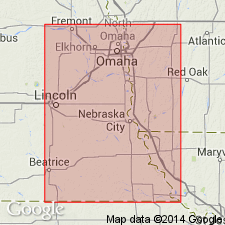
- Usage in publication:
-
- Kereford limestone bed
- Modifications:
-
- Original reference
- Dominant lithology:
-
- Limestone
- AAPG geologic province:
-
- Forest City basin
Summary:
Pg. 45. Kereford limestone bed of Kanwaka shale member of Shawnee formation. Near Lecompton and Atchison, Kansas, and at Amazonia, Missouri, the lower part of Kanwaka shale member contains one or more lensing limestones for which name Kereford limestone is proposed. Heretofore this limestone has been known as "Waverly Flagging," a nongeographic name, and has been loosely correlated as top part of Oread member. It is not persistent enough to serve as a horizon marker. The stone is dense, somewhat arenaceous, in part oolitic, and fossiliferous. In writers' opinion this bed belongs in Kanwaka shale member and not in Oread limestone, where Hinds and Greene placed it. Age is Pennsylvanian (Missouri age). Report includes cross sections, measured sections, geologic maps, stratigraphic tables.
Source: US geologic names lexicon (USGS Bull. 896, p. 1086); GNC KS-NE Pennsylvanian Corr. Chart, sheet 1, Oct. 1936; supplemental information from GNU records (USGS DDS-6; Denver GNULEX).
For more information, please contact Nancy Stamm, Geologic Names Committee Secretary.
Asterisk (*) indicates published by U.S. Geological Survey authors.
"No current usage" (†) implies that a name has been abandoned or has fallen into disuse. Former usage and, if known, replacement name given in parentheses ( ).
Slash (/) indicates name conflicts with nomenclatural guidelines (CSN, 1933; ACSN, 1961, 1970; NACSN, 1983, 2005, 2021). May be explained within brackets ([ ]).

